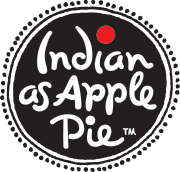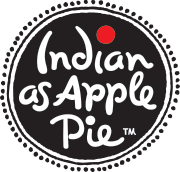January 24, 2023


Savory for breakfast? Yes, please! Did you know that in most Asian cuisines they eat savory dishes for breakfast rather then sweet? When I lived in Japan we had soba noodles and dipping sauce, in Hong Kong it was fish and rice, in North India breads stuffed with spicy morsels, and in South Indian cuisine upma is one traditional breakfast offering. Pronounced oop-mah, its made with a traditional tarka of oil or ghee, mustard seeds, and various vegetables and nuts. The main ingredient is sooji, farina, or Cream of Wheat. What in the West is made into a creamy, milky and sweet cereal is transformed in this dish into something quite special and addictive. While we are from North India and my mother did not make it at home traditionally, we learned to love it and make it from our many South Indian friends in King of Prussia, Pennsylvania where I grew up. We would often trade recipes for our favorite dishes. I give my aunties so much credit - because the tricks they taught me are sometimes not even found in traditional recipes. For example, the step below to dry roast the sooji will take your dish from just okay to phenomenal. Upma now is so common even in North India that whenever I visit my family in Delhi it's usually a part of the breakfast offerings. Do give it a try and eat it with either sliced banana or a piece of buttered toast with spicy Indian pickle on the side. If you are looking for gluten-free options, substitute a rice version (now found in many grocers) or use cooked quinoa. This version is adapted from the recipe I offered in my third book Vegan Indian Cooking on page 77. If you've had upma and love it, please leave a comment below. I would love to hear from you.
Stovetop: Upma, Savory Cream of Wheat
Makes 3 cups
¼ cup raw, unsalted broken cashews*
1 cup sooji (farina or Cream of Wheat)
2 tablespoons vegetable oil or ghee (I use coconut oil)
½ teaspoon black mustard seeds
10 – 12 curry leaves or 2 bay leaves
2 – 3 dried red chiles, slightly broken
½ cup yellow or red onion, minced
¼ cup diced carrots
¼ cup peas fresh or frozen (thaw slightly)
1-3 Thai or serrano chiles, stems removed and thinly sliced
1 teaspoon salt
2 cups boiling hot water
3 tablespoons lemon juice
1. Heat a large, heavy pan over medium-high heat. I use a 6-quart All-Clad stainless steel essential pan. Once the pan is hot, add the cashews and dry roast them for 2 ½ minutes, stirring often so they do not burn. Transfer to a plate to cool. Other recipes call for oil or ghee, but nuts have natural oil, so I don’t see the need to add more. You can substitute any raw, unsalted nut including peanuts, pine nuts, hazelnuts, almonds, or pistachios. If you don’t eat nuts, consider using pumpkin, sunflower, or sesame seeds.
2. Add the sooji to the same pan and dry roast it until it browns. Stir often to ensure it does not burn. This will take about 7 minutes total. About halfway through the process you’ll start to smell it cooking. Once roasted, transfer the sooji to a plate to cool. Many recipes do not call for this step and cook the sooji in oil with the other ingredients, but I think it is the difference between mediocre upma and delicious. You can also dry roast a whole bag of sooji, cool it, and store it for use later.
3. Wipe the pan with a dishcloth and add the oil. Once warm, add the mustard seeds, curry leaves, and dried chiles. Stir and cook for about 30 seconds until the seeds turn greyish and pop.
4. Add the onion. Stir and cook for 30 seconds. Add the carrots and stir and cook for 1 minute. Add the peas. Stir and cook for 1 minute. Add the fresh chiles and stir and cook for 1 minute. Each ingredient has varied moisture levels and cook times, why it helps to add them in stages.
5. Add the roasted sooji and salt. Stir. This will become a very dry mixture.
6. Very carefully add the boiling water. The water will splash once it hits the hot pan. Keep a lid handy to shield yourself from any splatter. Stir well and continue to cook until the water is absorbed, about 3 minutes. Some recipes call for a little more or a little less water. I’ve always loved this amount. Tweak it as you prefer. Too much water and your upma will turn soggy.
7. Add the cashews, turn the heat off, cover the pan completely, and let the mixture sit on the same burner for about 5 minutes. At this point, anything stuck to the bottom should easily scrape off with a spatula.
8. Add the lemon juice and stir well. Serve immediately with a dollop of butter and/or a sliced ripe banana and a buttered toast. Some recipes call for less lemon juice, but for me, this dish shines with a greater level of tartness. All the spices including the curry leaves are edible. Remove and discard the bay leaves if using.
*In this recipe, broken versus whole cashews are better. If you only have whole cashews, not a problem, just break the halves apart.
Comments will be approved before showing up.

